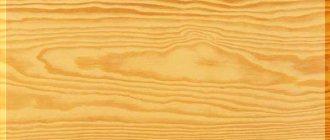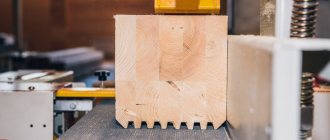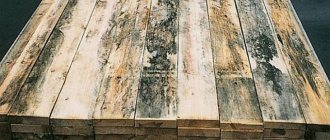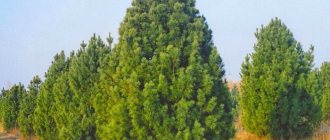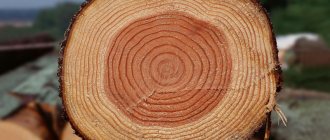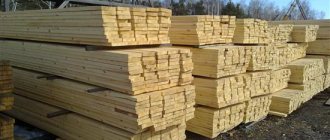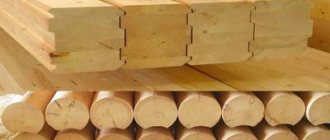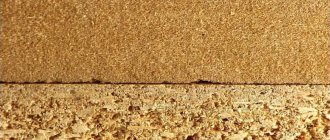Differences in habitat
Trees are entire genera of plants.
The photographs of spruce and pine trees show that they are very different from each other. The appearance of trees depends on the area in which they grow. The European fir tree can be seen in the same place as the pine tree. However, she is more drawn to warmth, so her “place of residence” is located a little to the south. The culture is widespread in Russia, but it is more common in Central Asia and Eastern Europe. Depending on their habitat, different types of spruce are distinguished: Siberian, Oriental, European, Canadian, blue, red, Serbian, Tien Shan, etc.
How can you distinguish pine from spruce?
Simply put, a Christmas tree is a small spruce. But often a pine tree is also called a Christmas tree - although this definition is incorrect.
And if you are planning to decorate the New Year holidays with such an attribute as a Christmas tree - all 4 trees, including fir and even cedar, are equally good.
At the same time, the difference between pine and spruce species is much more significant than the similarities.
- Pine has more resinous and dense wood than spruce. Its strength properties allow craftsmen to choose pine for finishing. Due to their greater resin content, pine boards and beams are more durable. Thanks to its looser wood, spruce has better heat and sound insulation and reduced weight.
- The smell of pine is much more intense than that of spruce. Pine wood is easier to impregnate with fire-fighting agents than spruce wood.
- In pine trees, unlike spruce trees, the tap root does not die off, giving new lateral shoots at a greater depth. Therefore, you don’t even need to water the pine tree - its roots can easily reach the first aquifer (depth of 3 m). And there will be at least one rainfall during the season. But spruce will be sensitive to drought or waterlogged soil; its lifespan may be reduced several times.
- Pine is preferred for the construction of wooden load-bearing structures and exterior decoration. Its wood texture is darker than that of spruce. Spruce is more suitable for interior work.
- Spruce is less sensitive to mold and mildew than pine.
- Spruce needles are smaller than pine needles.
- The pine tree cannot stand the shadow - it reaches for the light, which is why its branches are raised. This is clearly visible in young pines, which are sold before the New Year holidays. Spruce, on the contrary, needs less direct sunlight and takes root under the crowns of pine trees. Russian species of spruce even take twilight for granted, having gained protection from both the wind and excess light. The lack of direct sunlight is responsible for their accelerated growth not immediately from the emergence of seedlings from the seeds, but only after 15-20 years from the year the seed germinates into a new shoot.
How to distinguish spruce from pine, see below.
https://thedifference.ru/chem-otlichaetsya-elka-ot-eli/
https://stroy-podskazka.ru/el/otlichaetsya-ot-elki/
Rules of care
If healthy seedlings have been purchased, a suitable location has been selected, and planting in the ground has been carried out correctly, then caring for the mountain pine “Gnome” will not cause much trouble. The tree will have to pay more attention in the first 2-3 years after planting. It is necessary to correctly organize the basic elements of care, and the tree will develop normally without “surprises”. In the future, one-time procedures will be required as needed.
Watering
Immediately after planting, you need to pour about 20 liters of water under the bush. Once a week for a month, you need to water the tree with 1 bucket of water so that the plant successfully adapts to open ground. You can irrigate the crown with a watering can to moisten the needles. Young pines need to be watered 3-4 times per season. Mature pines are drought-resistant and do not need watering, except during a particularly dry season or in very hot weather.
Loosening
For intensive air access to the roots in the spring, when the soil warms up, it is necessary to loosen the surface layer of soil shallowly (no more than 8 cm) without touching the roots. In the future, if the soil is heavily compacted, light loosening is allowed no more than once a month, preferably after watering or rain. Year after year, a layer of pine litter will accumulate under the bush, and loosening will not be necessary.
Top dressing
The first fertilizing is carried out in the next season after planting. Complex mineral fertilizers or special fertilizers intended for conifers are applied to young bushes. An aqueous solution is prepared at the rate of 35-45 g of fertilizer per 1 square meter. meter of area. The nutrient solution is applied around the tree trunk only after heavy watering or intense rain.
Trimming
This procedure is not mandatory for the mountain pine “Gnome” and is carried out at the request of the gardener to form a crown of a given shape or if necessary for sanitary purposes. In the first 2-3 years, it is not recommended to prune young pine trees so that they grow better and become stronger. The crown is formed by annually pinching young shoots (“candles”), shortening them by 2-7 cm. After pinching, several new branches grow at the cut site, the density and splendor of the crown increases, and the decorativeness of the tree increases.
Preparing for winter
Mountain pine “Gnome” is a frost-resistant conifer variety. Pine has a unique feature - thickened bark at the butt of the trunk. Adult plants can easily tolerate frosts down to -35 degrees. But young bushes in the first years of life need shelter for the winter. Snow caps also pose a threat to fragile branches; they can break under the weight of snow. You can install plastic arcs over the bushes and put special agrotextile covers on them (sold in garden centers). You can cover the trees without arches with sparse burlap, covering material, throw on coniferous spruce branches and tie the bushes with twine. In the spring, as soon as the ground thaws, it is necessary to remove the shelter in time to prevent the bushes from overheating and the development of fungal diseases.
Disease Prevention
The condition of the plantings must be constantly monitored. The mountain pine “Gnome” has few natural “enemies”. These are fungal infections: blister rust, Schutte's disease, bark necrosis. To prevent the appearance of these diseases, before wintering, the bushes are sprayed with fungicides and copper-containing preparations (for example, a solution of copper sulfate). Insect pests (aphids, sawflies, scale insects, spider mites) can be gotten rid of using folk remedies (hand picking, soap solution, infusion of tobacco and insecticidal herbs), but approved modern insecticides are much more effective (Karbofos, Decis, Actellik ").
What is the difference between cones and seeds?
The shape of spruce and pine cones resembles the crown of these trees - pine cones are rounded at the base and elongated conical for spruce trees. Fruiting differs in timing; spruce trees begin later (20-25 years); pines have 10-15.
These are the reproductive organs of conifers; Both of them have male and female, they begin development in the spring. Female ones are located at the ends of coniferous legs; in spruce they are larger and more noticeable, as they are red. Pollen ripens in male cones, seeds ripen in female cones.
Spruce cones (fertilized) are usually located in the upper part of the tree; in pine they do not have a specific location. Seeds in cones are attached in different ways.
In pine, seed ripening occurs over almost two years, in winter. In its “friend,” they are ready in the current year of pollination.
Both are equipped with wings to reduce the speed of fall. Thus they are carried by the wind over long distances.
Pine: brief description
Pine is a centuries-old tree, and its age can range from 100 to 600 years. Subspecies of this plant are found as shrubs, trees or dwarf trees. Currently, only a few specimens are known to have survived to the 500-year mark. The height of the pine tree can reach 75 meters, and its base can be 4 meters wide. Preferring a medium-sized tree in wetlands not exceeding 1 meter.
Pine grows in open areas, as it is a light-loving plant. Here the height of the pine tree can reach a maximum of 50-75 meters, and the variety of shapes and sizes of pine cones amazes with their unpredictable curves.
Our production
| Edged board (grade 1) | ||
| 40x150x6000 | 5800 rub. | |
| 40x200x6000 | 6000 rub. | |
| 50x150x6000 | 5800 rub. |
| 6000 rub. | |
| Edged beam 200x200x6000 | 6700 rub. |
| 540 rub. | |
| 46mm | 600 rub. |
In all countries, spruce is considered the most suitable type of wood for the walls of a wooden house, and there are many reasons for this.
What is spruce and what is pine?
Let's try to figure out the difference between a Christmas tree and a pine tree. Norway spruce is one of the largest coniferous trees; it reaches a height of 25–30 m, but there are specimens even higher. The crown has a cone shape. The bark of an adult tree has a smooth gray structure. The coniferous cover is presented in the form of single needles that grow from axillary scales.
Scots pine is classified as a tree characterized by an average growth rate. The height of an adult beauty reaches 25–40 m.
The needles are double and 5–9 mm long. They are located densely in single shoots.
This is interesting: How to cover a roof with iron - we explain in detail
Photo of a tree
The spruce, the photo of which is presented below, is a beautiful and stately tree. It has a straight, strong trunk with dense bark, a thick crown and branches with prickly needles, arranged in the shape of a pyramid. “Female” trees grow cones, in which seeds ripen in the fall.
Spruce: brief description
It is a very beautiful pyramid shaped one. In the first 15 years, spruce is considered a young tree and has a simple tap root structure. Then, in the process of development, it becomes more branched and the main root dies off as unnecessary. On the surface, an identical situation occurs; for a long time, the tree grows exclusively upward, without producing lateral shoots.
The trunk is covered with scaly layers of gray bark. The cut of the spruce is light in color with a slight golden tint, practically does not release resin, the structure is homogeneous. The shape of spruce needles has a cone-shaped structure. Complete renewal of the coniferous crown occurs within 6 years. The places left without thorns are covered with fresh vegetation in the coming year.
By looking at the cones of different coniferous trees, you can understand how spruce differs from pine. Upon closer inspection, one can notice the cylindrical shape and slight pointedness. A special feature of spruce cones is that they hang downwards.
Similar features
If you try hard, you can find similar characteristics of Scots pine and Norway spruce:
- Both representatives belong to the pine family, coniferous class.
- They have modified leaves in the form of needles.
- The peculiarity of the cones is that they first grow strictly vertically, then hang.
- They belong to the first size trees over 20 m in height.
- They belong to windfall trees.
- They produce bactericidal substances - phytoncides.
- Used for industrial purposes in construction.
- In medicine they are used as medicines in the form of oils, infusions and decoctions.
- Serve as a decorative decoration during the New Year holidays.
Despite some similarities, there are still more differences between them.
How are they similar?
You should not immediately attack those people who are unable to distinguish between these two conifers - even if you identify them automatically, you need to recognize that they have many common characteristics. Experts identify the following common features.
- Kinship. Although only the class of conifers is common to the two trees, and their own genera have already been identified for each, this is still a fairly close relationship, indicating that there are not many differences, and they are not always on the surface.
- Formation of cones. Although they are not exactly the same, the process of their formation is approximately similar. So, at the moment of tying on a branch, they are located vertically, but then under their own weight they lower and acquire a horizontal position.
- Needles instead of leaves. Again, one can argue for a long time about the fact that their needles are different, but still the fact of their presence unites pine and spruce, making them stand out against the background of deciduous trees. The policy of selling not only spruces, but also pine trees before the New Year, further confuses those who are sincerely convinced that only spruce can be a New Year's tree.
- Considerable height. If both trees are left alone and allowed to grow normally, they will surpass most domestic species as adults.
- Phytoncides. Coniferous trees not only smell pleasant, but also have practical properties, including the ability to kill bacteria with the help of secreted phytoncides. In this regard, spruce and pine are approximately equivalent.
- Economic use. Both pine and spruce trees are very useful for human activity, and in different industries. The wood of these species is actively used for industrial and construction needs, and the bark, resin and needles are useful for pharmaceutical and cosmetology enterprises.
Similarity of trees
Scientists compared the trees with each other and identified the following similarities:
- Kinship. The Queen of the taiga and spruce are representatives of the Pine family and the coniferous class. This means that they have few differences and are not easy to detect.
- Lifespan. Trees are considered long-lived and die at approximately the same age - 3 centuries. If pine can survive spruce, it will only be for 50 years.
- Unpretentiousness. Trees prefer cold climates with high rainfall. The Christmas tree needs a little more warmth, but it can also withstand harsh climatic conditions.
- Appearance. In the absence of restraining factors, trees grow up to 50-75 m, towering above other species. The leaves are replaced by thick needles, which periodically fall off and are replaced by new ones. Unlike deciduous trees, spruce and pine never remain “bare”.
- Presence of cones. Conifers do not bloom, but they have cones that allow them to reproduce. They are not similar to each other, but they are formed in the same way. At the moment it appears on the branch, the cone “stands” vertically, and then takes a horizontal position under the weight of its own weight.
- Beneficial features. The trees smell good and secrete phytoncides - biologically active components that suppress the growth and development of pathogenic flora. Resin, cones, pine needles, bark - all this is used in folk medicine for the treatment and prevention of various diseases. Even a walk in the forest has a powerful healing effect on the body.
- Use on the farm. Pine and spruce are used in construction and industrial production, because their wood is reliable and durable. Resin, pine needles and bark serve as raw materials for the creation of cosmetics and medicines.
We recommend that you read: Keeping a Christmas tree in your apartment
Tips for choosing
Buy an artificial Christmas tree/pine tree only in specialized stores, avoid spontaneous markets and fairs. Remember that cheap products often emit toxic substances - formaldehyde and phenol, which cause nausea, dizziness, and headaches. Such fir trees/pine trees are very questionable from a fire safety point of view. A cheap Chinese-made New Year's beauty is not the best option, since there is a high risk of purchasing a low-quality product
Pay attention to domestic or European brands. Before purchasing, make sure that the tree/pine tree is stable and that the needles and branches are securely fastened. To do this, you should run your palm over the soft needles “against the grain”, and tug the hard needles
Bend the “tree” branch slightly. In a quality product, these parts take their original position and do not crumble. The spruce/pine trunk must be smooth. Good spruce/pine is treated with fire-resistant impregnation, which protects against fire if an accidental spark from sparklers or garlands hits it. But paper needles are a fire hazard. An artificial Christmas tree/pine tree should not have a strong chemical smell. To recreate the smell of a living tree, use a fragrance. Don’t forget to ask the seller for a quality certificate certifying that the forest beauty is environmentally friendly and hypoallergenic.
Storage tips
- Fold the spruce/pine so that the branches bend towards the trunk.
- Store the product in a cool place. Under no circumstances should you leave the “tree” near heating appliances or radiators. The same rule is also true when installing a Christmas tree/pine tree.
How to easily distinguish spruce from pine
Spruce and pine trees can be distinguished from each other by comparative characteristics. The difference between spruce and its closest “sister” is presented in the table.
| Characteristic | Spruce | Pine |
| Branches | Omitted, forming the shape of a pyramid or cylinder. They start almost from the ground, completely covering the trunk. | Directed upward, starting from the middle of the trunk. Allows most of the sunlight to pass through. |
| Needles | Small and thin, densely located. Painted in bright green (variations are possible, depending on the type). The needles are attached to the branches one at a time and are replaced every 7-12 years. The length varies from 2 to 3 cm. | The length of the needles is 4-6 cm. The needles are larger and smoother, tapering towards the end. The needles grow in pairs and fall off in the same way. With the onset of cold weather, their color changes from light green to yellowish with a hint of copper. Most of the needles fall off in the fall. A complete change of cover occurs within 1-3 years. |
| Aroma | Weak, barely perceptible. | Expressed. |
| Height | Trees reach 50 m (there are exceptions, depending on the species). | Most trees grow up to 75 m. |
| Cones | “Male” - medium size, faded. “Female” - large, bright, located at the tips of branches (in the upper part of the tree). | “Male” ones are yellowish, no larger than a cherry pit. “Female” - very small, inconspicuous, located at the ends of the whorls. |
| Trunk | Knotty, less resinous. | Smooth, straight, with a lot of resin. There are no knots or defects. |
Categorical opposites
From a botanical point of view, these species are completely different in appearance and growth characteristics:
- Their crown shape is similar only at a young age. And if spruce preserves it throughout its life, then pine changes shape beyond recognition with age. A spreading, disorderly canopy is formed from a regular geometric cone.
- The growth rate of pine is higher than that of spruce. The first one gives growth at a young age, on average 50 cm. Spruce grows extremely slowly up to 10 years.
- The structure and color of the bark differs radically. Spruce's is thin, smooth, gray. The pine “cover” differs in thickness, layering, and color. The coloring in the lower part of the trunk is grayish-brown and much darker than on the upper branches. Pine bark is one of the most popular decorative materials in landscape design for figured paving.
- Spruce needles fill the shoots with single “needles,” while double needles are formed on pine. Their length is twice that of spruce trees.
- Pine seeds begin to appear in the ninth year. Reproductive capacity of Spruce occurs at the age of 20 years.
- Fir cones, 10–15 cm in size, ripen throughout the current year. Pine fruits ripen 18 months after pollination.
- Both types require high soil aeration and do not tolerate compaction and trampling.
- They have high frost resistance.
From the point of view of environmental conditions, the choice of growing location is radically different:
- Pine is a typically light-loving plant, which feels better the more sun it has. Spruce, on the contrary, prefers partial shade and suffers in scorching heat.
- Both crops are moisture-loving, but unlike pine, spruce does not tolerate drought at all.
- And those other windfall trees, but with strong gusts on the Pine, the crown and upper part of the trunk are the first to break. The spruce is immediately uprooted.
- For full growth, Spruce requires rich, fertile, loose soil. Pine makes do with relatively poor sandy soil. Although, both species intensively acidify the soil around them with the products of their vital activity.
- The winter hardiness of Spruce is much less than that of Pine. For the first, changes in night and day temperatures at the end of winter and beginning of spring are especially dangerous, then spruce trees need to be protected with a light covering, for example, agrofibre.
- Spruce is more resistant to urban gas pollution than pine.
- Pine, unlike Spruce, is planted in windproof plantings due to its rapid growth.
General rules for pinching coniferous plants
- You can start pinching conifers at any age. For example, the spruce has reached 1.5 meters in height and you want it to remain at this size. Or you got a plot with already mature plants that need to be given a neat shape. But if you initially want to get a dwarf spruce, you need to start pinching as early as possible.
- The optimal time for pinching conifers is when the young shoots are fully formed, but the needles have not yet opened. These dates vary slightly for different breeds, but on average they fall at the end of spring - beginning of summer.
- To get a neat and symmetrical crown, you need to pinch all the shoots - both main and lateral.
- How much to pinch depends on the decorative purposes. It is usually recommended to remove at least 1/3 of the shoot and leave at least 1/4.
- It is better not to cut the shoots, but to break them out, so as not to damage the needles on the future crown of the branch. The needles live from 2 to 5 years, and if you cut them off in half, they will not grow back and will look untidy the entire time.
- Once you start pinching conifers, it is advisable to do it every season. If you skip the procedure for a year or two, the decorative effect will disappear.
Before you start pinching conifers, assess the amount of work and your readiness to do this annually
Basic characteristics of spruce and pine in comparison
Color
Spruce has a lighter and more delicate tone. The shade stability is high, the breed is not prone to blue discoloration. Pine comes in a wide range of shades, from yellow to brick. Over time, pine wood tends to darken. The richness of its shades is valued in construction.
The presence of blue stains in pine lumber is not evidence of rotting processes. This only indicates the freshness of the cut. Over time, the blue of the pine disappears.
Fiber structure
Spruce has a uniform and not too intensely expressed fiber structure. Pine, on the other hand, has a more characteristic and recognizable texture, with clearly visible annual rings.
Resin content
Spruce has lower resin content than pine. This determines a number of features in the processing and use of materials. It is recommended to use spruce for the construction of baths due to its minimal resin content. When heated, the resin does not release as actively as is the case with pine.
Machinability
Spruce is distinguished by an abundance of small knots, which makes it difficult to process. In this regard, pine is more pliable and has minimal presence of large knots. Pine tolerates sawing and cutting well, while spruce tolerates sanding and chipping. Manual cutting is equally successful when working with both types of materials.
Rot protection
Spruce has moderate natural protection against rotting. To preserve the material, it requires additional impregnation against fungi. In most cases, pine does not require such treatment, as it has high natural protection against rotting.
Definition
Eurolining is a wood material that has a number of advantages. This is a material that, when properly processed, can withstand high and low temperatures without damage, does not succumb to moisture and does not deteriorate over time. An important point is the natural color of the wood and its resistance to ultraviolet radiation. Even in bright sun most of the day, the coating will not become unusable. The color of the eurolining will remain the same, not to mention the properties.
Another advantage that the material has is its ease of installation. Thanks to the special lock technology - tongue and groove, installation will take much less time. At the same time, for this type of lining there are special fasteners - clamps, which greatly facilitate the task and firmly and reliably fix the material. This does not require any holes, which naturally affects the strength and integrity of the panels.
The difference between spruce and pine
Christmas tree and spruce - People use these terms to refer to any trees decorated for the holidays. Sometimes pine is also called this, although the scientific approach does not approve of this.
In botany, this type of tree stands apart, because has its own characteristics. To verify this, just study her photograph.
The main differences between Christmas trees and pines are as follows:
- Wood. Pine is dense, with a lot of resin. Due to its strength and durability, it is more often used as a building material. As for spruce, it has its advantages. These include low weight, good noise and heat insulation properties. Interior decoration with spruce wood ensures silence, protects from cold and winds, and reduces utility costs (heating, electricity).
- Aroma. Another difference is the intensity of the smell. Spruce has a less pronounced aroma (many people notice that the smell in a pine forest is stronger than in a spruce forest). Its wood is more difficult to impregnate with fire-fighting substances.
- Needles. If you look at what a spruce tree looks like in the photo, you can see small thin needles. Pine trees have longer and larger needles.
- Whimsicality. The tap root of the spruce dies over time, which makes it unable to reach the first aquifer located at a depth of 3 m. Therefore, the tree is sensitive to the lack of rain and waterlogged soil (growing in such conditions greatly reduces its lifespan). The pine tree retains its taproot, so it can easily withstand long periods of drought. If a tree grows on a personal plot, it does not need to be watered (or it should be done rarely).
- Need for sunlight. Spruce trees easily tolerate the lack of sunlight and feel good in the shade under the crowns of other trees (this is especially true for varieties growing in Russia). The lack of ultraviolet radiation leads to the fact that during the first 15-20 years they grow slowly, and then develop at a rapid pace. Pines are light-loving trees that need the sun and are constantly drawn to it. Because of this, the branches rise slightly upward (especially in young specimens that are sold before the Christmas holidays).
- Properties of wood. If we talk about the difference between trees, it must be said that spruce is less often affected by harmful microorganisms. This allows it to be used for finishing damp rooms prone to the formation of fungus and mold.
- Scope of application. Pine trees have darker wood and are used for exterior work and for the production of load-bearing structures. As for spruce, it is more often used for interior decoration.
Lifespan
Another important difference between spruce and pine is life expectancy. Pine lives on average about 300-350 years. Most trees of this age grow in the Russian taiga, Europe and the Balkans. However, there are exceptions to the rules in the world. For example, the maximum lifespan of an ordinary species was 1000 years. Pine trees grow in places inaccessible to people, the age of which has already exceeded 5000 years.
As for spruce, it lives a little less than pine - 200-300 years. Black spruce trees native to America can live up to 350 years. Each type of tree has its own long-livers. For example, in the USA, in a district in eastern California, there is a specimen over 5,000 years old. Another long-liver is a tree that has been growing in Sweden for more than 9,500 years.
The period of existence of a particular species depends on several factors. The plant can live for a long time, provided that it grows away from populated areas or in a protected area.
Natural disasters, the harmful influence of people, drought or fires - all these conditions negatively affect the life expectancy of trees.
Spruce varieties
Norway spruce is the most popular variety and is most often seen in photographs. It is an evergreen coniferous tree with a cone-shaped crown and dark gray bark. Representatives of the species grow up to 30 m (some specimens reach 50 m). They are found in Russia, North America, the Balkan Peninsula, northeastern Europe, as well as in the Pyrenees, Alps and Carpathians.
There are other varieties of spruce:
- Siberian. Many people are interested in what Siberian spruce looks like and how it differs from other species. "Siberian" has a pyramid-shaped crown, shorter and prickly needles. The average height is 30 m, and the diameter is 70-80 cm. The spruce habitat is Kazakhstan, the Urals, northern Europe, China, the Magadan region, the Scandinavian Peninsula.
- Eastern. Grows in the Caucasus and northern Asia. It has a conical shape, gray-brown bark with a small amount of resin and branches located close to each other. Mature spruce trees reach a height of 30-55 m. They look especially impressive in clean areas where no other trees grow.
- Ayanskaya. The difference between common spruce and Ayan spruce is minimal, so only a professional can distinguish them from each other. This species can be found in the Far East, Sakhalin, Kamchatka, the Kuril Islands, the coast of the Sea of Okhotsk, China, Korea and Japan.
- Canadian. A slender, low tree that grows up to 15-20 m. The trunk diameter does not exceed 1 m, so you can easily grab it with your hands. Canadian spruce has thin, scaly bark and long blue-green needles. The shape of the crown changes throughout life: at first it looks like a narrow cone, then - a cylinder. The homeland of spruce is North America.
- Korean. Grows in the Far East. It has a pyramidal crown, gray-brown bark, and bluish-colored needles. The trunk diameter can reach 80 cm.
- Red. Its height varies from 20 to 40 m, but only if it grows in favorable conditions. The average trunk diameter is 50-60 cm. A distinctive feature of this species is its long needles, which are almost unprickly due to their rounded ends. Most of these trees are found in Canada and England.
- Blue. A popular variety that can grow up to 46 m. It is often planted in garden plots and serves as a decorative element. It has beautiful gray-green or bright blue needles, red or purple cones. The crown of young and mature trees has a different shape: at first it looks like a narrow cone, then like a cylinder. Spruce prefers moist soil, so in nature it grows on the banks of streams and mountain rivers.
- Tien Shan. One of the tallest varieties of spruce, reaching 60 m and having a wide trunk (from 1.7 to 2 m in diameter). It has diamond-shaped needles, a crown in the form of a cylinder or a pyramid. If necessary, the roots bend in different directions and cling to stones and rocks, which allows the tree to grow even in less than favorable conditions. Growing areas: Kyrgyzstan, Kazakhstan, mountainous regions of the Tien Shan, Central Asia.
- Serbian. Most representatives of this species have a height of 20-35 m (rare specimens grow up to 40 m). The tree has a narrow pyramidal crown, short and sparse branches, and green shiny needles (if you look closely, you can see a bluish tint). It is rare to see Serbian spruce in nature. Its habitat is Eastern Bosnia and Western Siberia.
- Spruce Glen. How it differs from common spruce is the presence of the densest crown. The bark has chocolate-colored scales. Dark green needles have a bluish tint and a pronounced aroma. Spruce is found in Japan, the Kuril Islands and Sakhalin.
What is the difference between pine and spruce
The differences between these two breeds can be described in several categories:
- size and height;
- size of cones;
- shape and type of needles;
- life expectancy;
- type of root system;
- color;
- application in industry.
Tree size and height
Spruce grows only up to 50 m. Pines grow up to 75 m, and some even higher and more. The pine trunk is much thicker and stronger.
Did you know? In Sweden, spruce grows, which is more than 9 thousand years old, it is considered the oldest plant in the world at the moment.
Cone size
The cones of the Christmas tree are loose and long. The scales are oval. Size up to 15 cm. The second tree has cone-shaped cones, the size of which reaches 6 cm. The scales are triangular and dense.
Needle shape
Spruce needles are sharp, thick, very small, only up to 2 cm. This tree consists of single needles, seeds and branches. Pine has long sparse needles, up to 4 cm, two needles in a bunch.
Lifespan
The Christmas tree lives up to 400 years. Not counting certain species that have a shorter duration. The life of the second conifer lasts up to 300 years, excluding some species, whose duration is longer due to the characteristics of the territory and soil.
What types of pine trees are there?
This family includes several different species. As an example, we should consider the main places where the tree has taken root well are European and Asian territories. The length of the needles can reach 10-15 cm. Centuries-old trees are distinguished by spreading branches, high strength and resin. The tree trunk is straight, covered with a thick protective layer of gray-brown bark. The top of the pine tree is characterized by orange-red bark, which quickly and easily hardens. The main growth of a tree occurs in the first century of its life.
Dwarf pine is used to decorate personal plots. It takes root well in a small area, is easy to process and does not leave debris. In addition, due to its small size, it can be placed in a small area. These trees blend perfectly with the flora of any landscape design thanks to all sorts of colors. Dwarf pine is an unpretentious plant, but for planting it is necessary to use seedlings aged from 3 to 7 years. Additional watering can be eliminated, since trees are able to obtain all the necessary moisture independently from the environment. An exception may be the driest regions.
Types of fir trees
For a more detailed look at the characteristics of these trees, it is worth mentioning the blue spruce. This beautiful plant is used for decorative planting. The height of an adult tree can reach 50 meters. True, specimens are often found no higher than 25-30 meters with a trunk diameter of 1.5 meters. Spruce needles initially take a conical shape, then, growing, become cylindrical. The length of the needles does not exceed 3 cm, and the cones of blue spruce can grow up to 11 cm in length, taking on shades from reddish to purple.
Glen's spruce is an original tree with an unsightly crown. It reaches a height of about 30 m, while the diameter of the trunk varies from 60-80 cm. The Japanese and Kuril Islands, as well as some regions of Sakhalin, are the main habitat of this interesting species. Looking at this tree, you can understand exactly how spruce differs from pine. This is mainly the shape of the needles and the length of the needles, not exceeding 3 cm. To this you can add the structure of the bark and wood.
Reproduction methods
Fir can be propagated in 2 main ways: cuttings or seeds. For species specimens, the method with seeds is more suitable. Decorative firs are usually taken from cuttings.
Cuttings
First, let's look at how fir cuttings occur. For propagation, you need to take cuttings, the length of which is from 5 to 8 cm. They should be taken exclusively from young plants. The shoots must be annual with only one apical bud and heel (mandatory condition).
If you need to get a cutting with the required heel, then it is recommended not to cut it, but to tear it off with a sharp movement along with a piece of bark and wood from a more mature shoot. You will need to prepare the cuttings in the spring before the sap begins to flow, on a cloudy morning from the middle half of the crown, on the north side of the tree
Before you begin planting, you will need to remove all burrs from the heel with the utmost care. It is necessary to ensure that the bark does not peel away from the wood.
To avoid encountering fungal diseases in the future, the cuttings will need to be kept in a 2% solution of Fundazol and Captan for 6 hours. An alternative is also suitable - a dark pink solution of potassium permanganate. After this, the cuttings will need to be carefully planted in a mixture consisting of sand, humus and leaf soil (the parts must be equal). At the end of this stage, the sprouts are covered with a transparent cap.
In order for the cuttings to take root as quickly as possible, it is recommended to organize the bottom heating of the substrate 2-3 degrees (Celsius) above room temperature. It is recommended to keep the cuttings in a bright place, but they should not be exposed to sunlight. Daily ventilation will be required. In winter, it is better to put the container with cuttings in the basement, and in the spring you can take it out into the fresh air. Please note that rooting of cuttings will take a long time. The first thing the fir will do is start to grow callus, and roots will appear only in the second year.
Seeds
Propagating fir by seeds is not the easiest way. Collecting seeds can be difficult, because the cones of adult specimens ripen at an impressive height, and as soon as they ripen to the end, the winged seeds from them immediately fall off and fly away. If you managed to get a pine cone that is a little unripe, you will need to dry it, and then extract the seeds from it and store them until sowing procedures in a refrigerator or basement. The humidity should be high. Before direct planting, fir seeds need proper stratification.
In April, the seeds will need to be sown in the garden bed, maintaining a soil depth of 2 cm. The latter should consist of turf and sand. Without watering, the planting should be covered with film to prevent a crust from forming on the surface of the soil. This procedure also significantly speeds up the process of emergence of the first shoots. After 3-4 weeks, the sprouts will sprout, and you need to start watering and loosening them. You will need to weed the beds.
In the first winter season, young seedlings must be covered with spruce branches. Next year you can begin planting the seedlings in their permanent place. Fir from seeds will grow very slowly at first. Within 4 years, it will reach a height of only 30-40 cm, since at this time the formation of the root system will mostly occur. After this, the growth of the tree will noticeably accelerate.
Living conditions
Scots and Siberian pine, Norway spruce are the most common species found in Russian lands. Both species grow everywhere, adapting to environmental conditions.
The main difference is in relation to the illumination of the growing area. Pine is very photophilous, it is so drawn to the light that it is able to live at high altitudes above sea level, where there are no competitors, on soil poor in useful compounds. If the branches are in the dark, they gradually die, and the trunk in this place is covered with bark. Spruce tolerates large shades, so its branches are located even near the ground, in the shady area. Spruce forests love soils rich in nutrition and moisture.
Pine trees reach for the light.
Due to the different relationship to sunlight, the vegetation under the canopy of a spruce forest differs from that of a pine forest. This also applies to mushrooms and berries, mosses and lichens.
Features of log houses
If a spruce log house has been treated with special compounds, its service life will greatly increase. Spruce is also the most affordable building material, and wins the competition due to its low cost. This material can be used not only for construction and exterior decoration, but also for design decoration of interior spaces, including the manufacture of furniture. This type of wood is also distinguished by bactericidal properties that protect those living in the house from many diseases. In addition, spruce does not cause allergic reactions.

